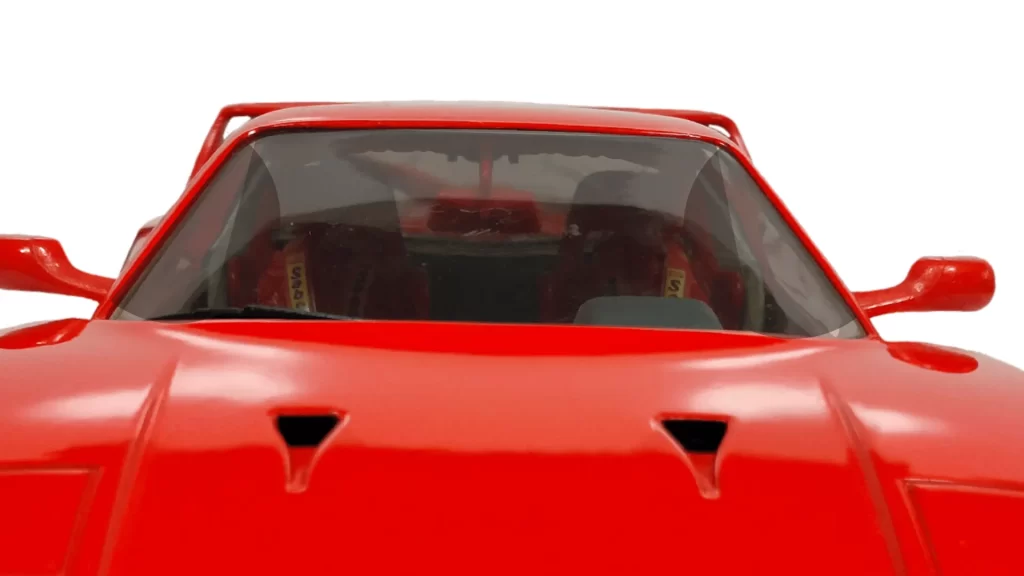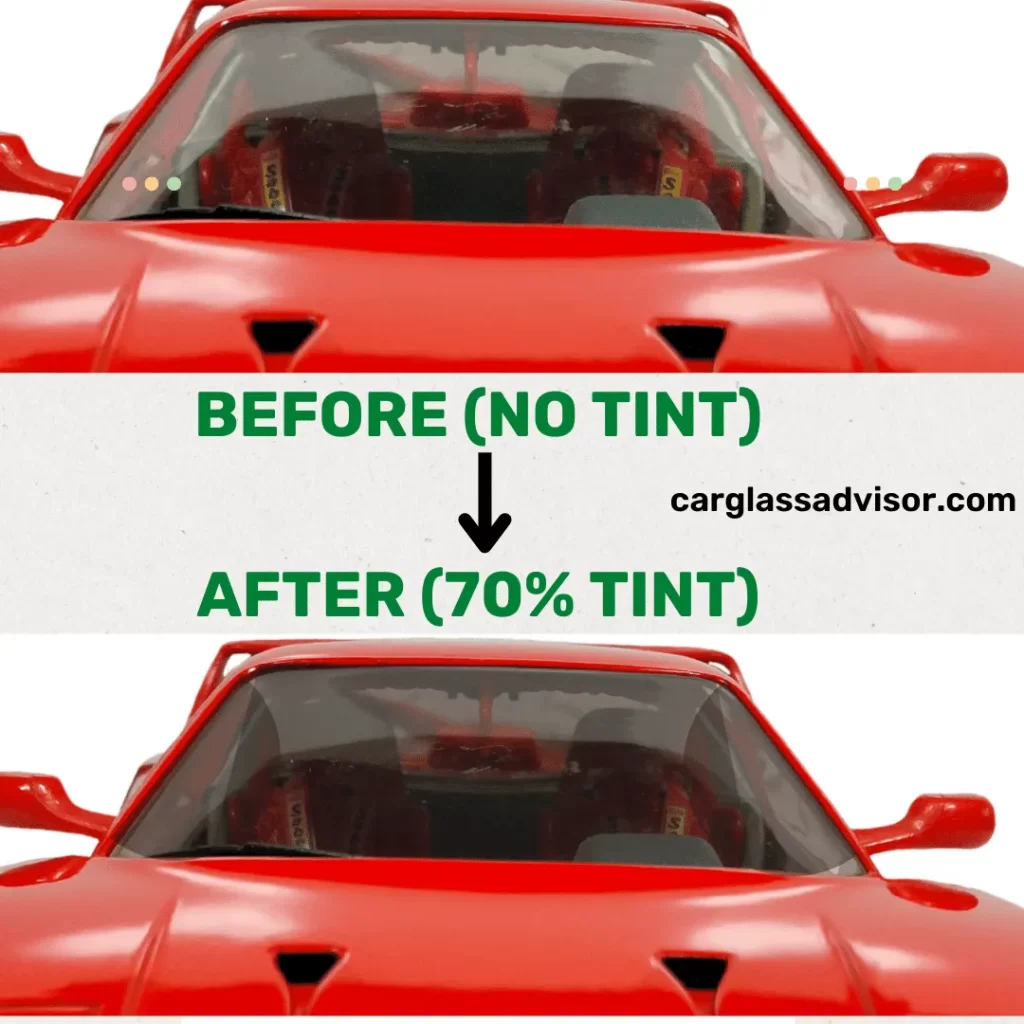Window tinting refers to applying a thin film to the windows of a vehicle in order to reduce the amount of sunlight and heat that enters the interior. This can help to keep the inside of your car cooler, protect your skin and eyes from harmful UV rays, and provide privacy.
One way to measure the level of window tinting is by its percentage, which refers to the amount of light that may pass through the film. For example, a 70% window tint means that 70% of the light that hits the window will pass through, while the remaining 30% will be blocked.
This level of window tinting is legal for use on the front, side, and rear windows of most vehicles in the United States. However, there are some exceptions to this rule. In New Jersey, New Hampshire, and Vermont, a 70% window tint may not be permitted on the front windows of a vehicle. It is always important to check with your local Department of Motor Vehicles (DMV) to determine the specific laws and regulations regarding window tinting in your area.
Besides the percentage of light that will pass through, window tinting film can also be rated for its level of heat reduction and UV protection. Higher quality tinting films can block a greater amount of heat and UV rays, providing even greater comfort and protection for the occupants of the vehicle.
What does 70% tint look like?
70% window tint appears relatively light and allows a significant amount of light to pass through. When looking at the window from the outside, you should still be able to see through it, although it may be slightly darker than a window with no tint at all. The exact appearance of 70% tint may vary depending on the specific type of film being used and the lighting conditions. You can expect the tint to appear relatively transparent, while still providing some level of glare reduction and privacy.

Car Window Tint Percentage Visualization Tool
Select a percentage value from 1 to 100 to see how dark it is:
Selected Percentage:
Use the basic window tint visualization tool above to see how dark 70% tint is. Set the value to 70 and the tool will simulate the tint percentage for the most common black tinting film. However, for other tint colors, use our advanced tint percentage visualization tool. That said, the car picture below shows the comparison between no tint and 70% tint.

Can you see through 70% tint at night?
Yes, you should still be able to see through a 70% window tint at night, although the visibility may be slightly reduced compared to a window with no tint. The amount of light that is blocked by the tint will depend on the specific type of film being used, as well as the lighting conditions. A 70% tint will allow a significant amount of light to pass through, making it relatively easy to see through at night. However, it is always a good idea to exercise caution when driving at night, regardless of the level of window tint on your vehicle.
50 vs 70 percent windshield tint
The major difference between a 50% and a 70% window tint is the amount of light that is allowed to pass through the film. A 50% window tint will block 50% of the light that hits the window, while a 70% window tint will allow 70% of the light to pass through.
A 50% window tint will be darker than a 70% tint. This can make it more effective at reducing heat and glare inside the car, but it may also make it harder to see through the windows from the inside and outside. A 70% tint, on the other hand, will allow more light to pass through.
Both 50% and 70% window tints are legal to use on the front, side, and rear windows of most vehicles in the United States, with some exceptions. It is always a good idea to check with your local Department of Motor Vehicles (DMV) to determine the specific laws and regulations regarding window tinting in your area.
70 percent window tint vs no tint
There are a few key differences between a vehicle with a 70% window tint and one with no tint at all. Here are some of the main points to consider:
Light transmission: A 70% window tint will allow 70% of the light that hits the window to pass through, while blocking the remaining 30%. A window with no tint will allow 100% of the light to pass through.
Heat reduction: A 70% window tint can help to reduce the amount of heat that enters the interior of the vehicle, especially when the sun is shining directly on the windows. A window with no tint will allow more heat to enter the vehicle, which can make it feel warmer and less comfortable.
UV protection: A 70% window tint can provide some level of protection against harmful UV rays, which can cause skin damage and fade the interior of the vehicle. A window with no tint will offer no protection against UV rays.
Glare reduction: A 70% window tint can help to reduce glare from the sun, making it easier to see while driving. A window with no tint will allow more glare to pass through, which can distract and be uncomfortable.
Privacy: A 70% window tint can increase privacy by making it more difficult for people outside the vehicle to see inside. A window with no tint will offer no privacy.
Overall, a 70% window tint can provide some benefits, such as heat reduction, UV protection, glare reduction, and privacy. However, it may not offer as much protection as a darker tint, and it may not be as effective at reducing glare. Whether 70% window tint is the right choice for you will depend on your specific needs and preferences.
How much does 70% tint cost?
The tint cost of 70% window tint can vary widely depending on several factors, including the size of the windows being tinted, the type of film being used, and the location of the tinting service. You can expect to pay anywhere from $100 to $400 or more for a full window tinting job on a typical passenger vehicle. Keep in mind that the cost may be higher for larger vehicles, or if you choose a higher quality film that provides greater heat and UV protection.
Is 70% tint worth it?
Whether 70% window tint is worth it will depend on your personal preferences and the specific needs of your vehicle. Some people may prefer a lighter tint that allows more light to pass through, while others may want a darker tint for greater privacy and glare reduction. A 70% tint can provide some benefits, such as reducing the amount of heat and UV rays that enter the interior of the vehicle, as well as increasing privacy. However, it may not offer as much protection as a darker tint, and it may not be as effective at reducing glare. Ultimately, whether to get 70% tint will depend on your individual needs and priorities.
Conclusion
A 70% window tint allows 70% of sunlight to pass through the windows of your car, with the remaining 30% being blocked. This level of tinting is generally allowed on the front, side, and rear windows of most vehicles, except for New Jersey, New Hampshire, and Vermont, where it may not be permitted on the front windows. It is always a good idea to check with your local Department of Motor Vehicles before applying any window tinting to your car to ensure compliance with the law.

